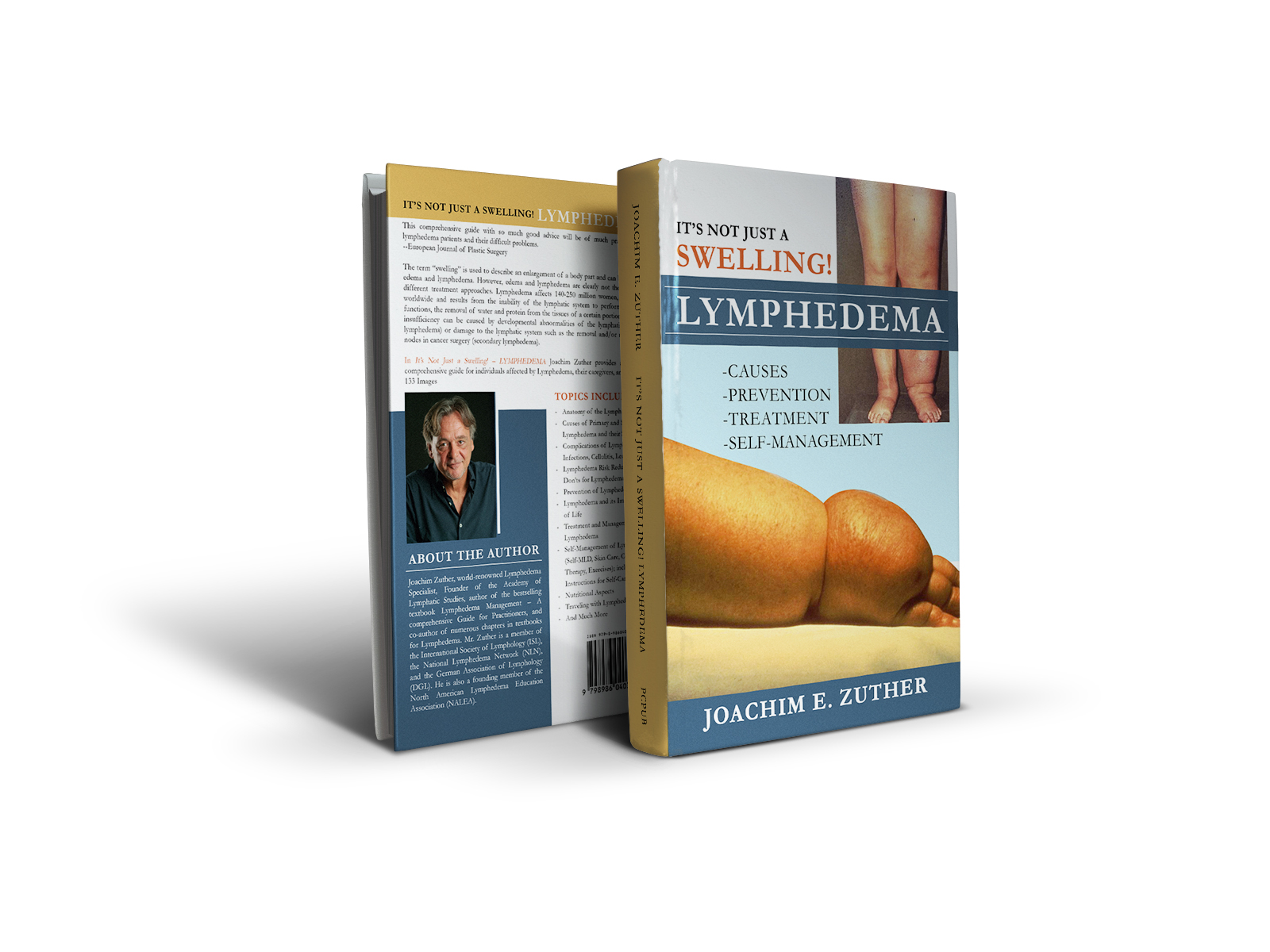New Book for Patients and Caregivers 
In It’s Not Just a Swelling! – LYMPHEDEMA Joachim Zuther provides an up-to-date and comprehensive guide for specifically geared towards individuals affected by Lymphedema, their caregivers, and family members. 133 Images. Paperback and Kindle version
Topics include:
- Self-Management of Lymphedema (Self-MLD, Skin Care, Compression Therapy, Exercises); includes Instructions for Self-Care with images
- Nutritional Aspects
- Lymphedema Risk Reduction, Do’s and Don’ts for Lymphedema
- Complications of Lymphedema, such as Infections, Cellulitis, Leakage
- Lymphedema and its Impact on Quality of Life
- Traveling with Lymphedema
- Prevention of Lymphedema
- Treatment and Management of Lymphedema
- Causes of Primary and Secondary Lymphedema and their Stages
- Anatomy of the Lymphatic System
- And Much More
Click Here to Buy
The Author 
Joachim Zuther, Lymphedema Specialist. Read more |
By Joachim Zuther, on February 4th, 2024
Unlike the heart in the blood circulatory system, the lymphatic system does not have an active pump to propel lymphatic fluid back to the bloodstream. Effective lymph flow depends on sufficient muscle and joint activity, especially if the functionality of the lymphatic system is compromised. Decongestive exercises are most effective if performed while . . . → Read More: Decongestive and Breathing Exercises for Lymphedema
By Joachim Zuther, on January 1st, 2024
The surgical procedures performed on individuals affected by breast cancer may be mastectomy, partial mastectomy, or lumpectomy. Along with the actual breast surgery for cancer, axillary lymph nodes are removed and/or radiated. As a result of axillary lymph node clearance, the normal lymphatic drainage from the extremity is impaired, and some patients experience the onset . . . → Read More: Lymphedema Risk Reduction
By Joachim Zuther, on January 1st, 2024
I would like to thank Dr. Judith Nudelman for writing this article on the importance of practicing appropriate risk reduction for individuals affected by, or at risk of developing lymphedema.
Dr. Nudelman is an Associate Professor of Family Medicine, Clinical at Alpert Medical School, Brown University. She is also a Certified Lymphedema Therapist (CLT), . . . → Read More: Debunking Lymphedema Risk Reduction Behaviors: Not So Fast
By Joachim Zuther, on November 2nd, 2022
Secondary lymphedema results from an identifiable damage leading to disruption or obstruction of normally functioning lymph vessels and/or lymph nodes and may present in the extremities, trunk, abdomen, head and neck and external genitalia.
Worldwide, the most widespread cause of secondary lymphedema is an infection with a thread-like worm named wucheria bancrofti, which . . . → Read More: Secondary Lymphedema
By Joachim Zuther, on October 28th, 2022
Being involved in lymphedema management for over 30 years, I would like to discuss the importance of appropriate dosing levels for lymphedema treatments, in other words, how many treatments per week should ideally be applied in Phase I, or the intensive phase of Complete Decongestive Therapy (CDT).
CDT is performed in two . . . → Read More: Dosing for Complete Decongestive Therapy in the Treatment of Lymphedema
|
Support the Lymphedema Blog This blog is supported by donations. Click to donate today.

Disclaimer The information on this web site is not intended to give medical advice and does not necessarily reflect the opinions of any physicians, nor is it guaranteed to be correct and complete. You should not rely on any information in this web site without seeking the advice of a physician or certified healthcare provider.
|


 Joachim Zuther, Lymphedema Specialist.
Joachim Zuther, Lymphedema Specialist. 
